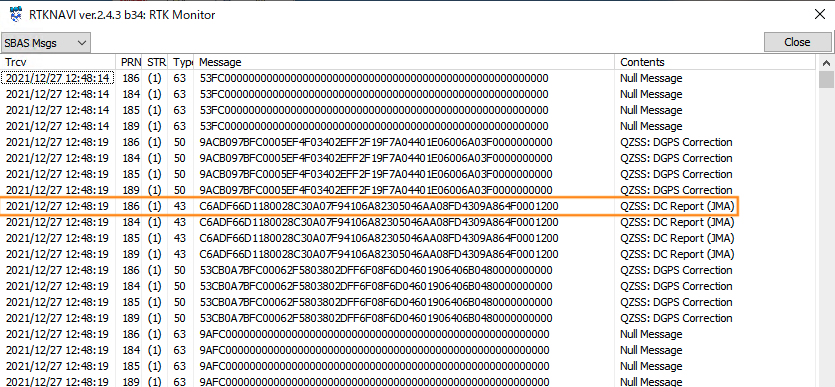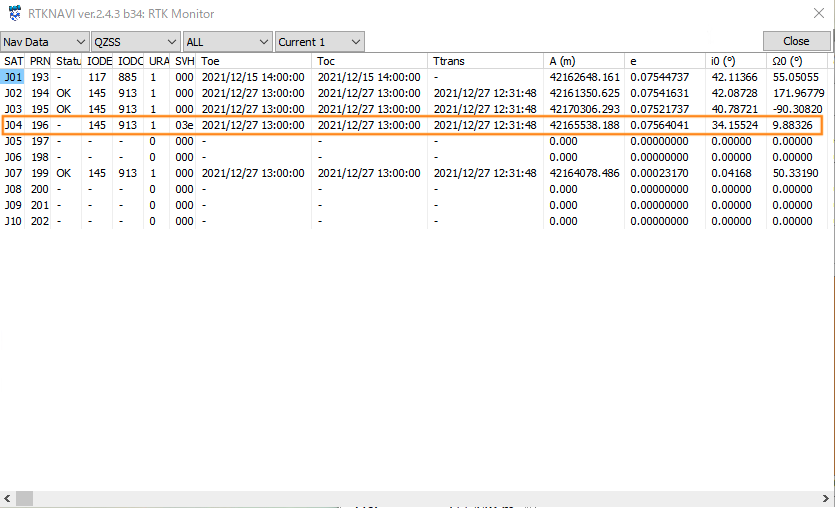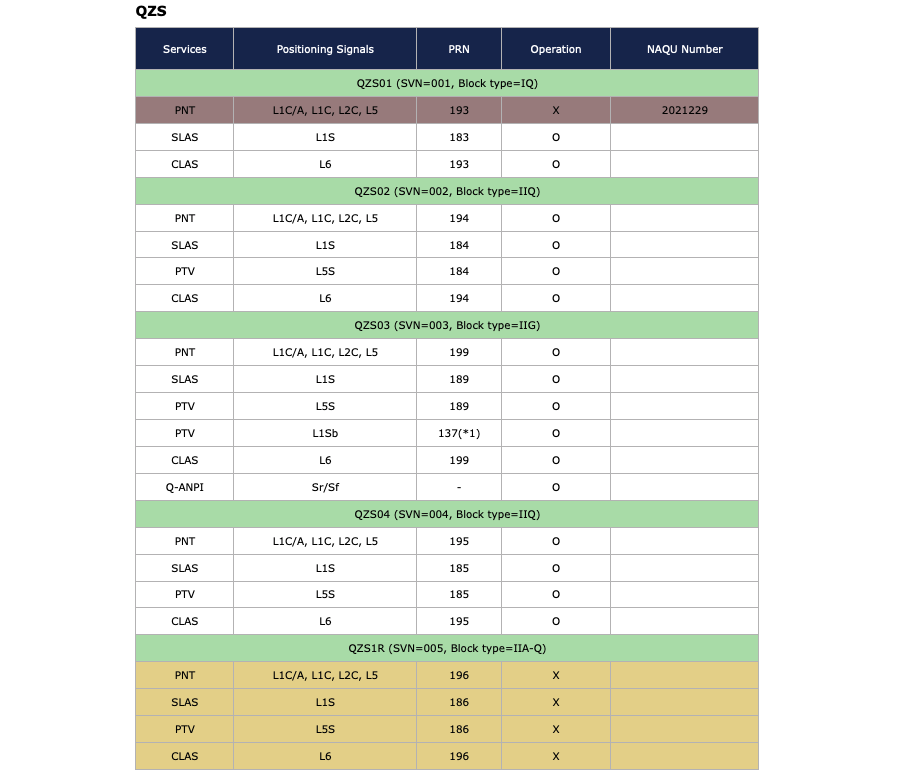Reception of disaster and crisis management report sent from QZS-1R on u-blox ZED-F9P
The u-blox ZED-F9P receiver will be able to receive the quasi-zenith satellite (QZS, or petnamed as Michibiki) L1S signal by setting.
If you turn on the reception of the L1S signal in the receiver control software u-center and also turn on the output of the raw data SFRBX of ZED-F9P, We can observe the disaster and crisis management report (DCR) message with RTKLIB.
When I was looking at the RTKLIB screen of the ZED-F9P with this setting, I was able to receive DCR message from QZS-1R (replacement of QZS-1).

Since SVH (space vehicle health) in the ephemeris of QZS-1R has a value other than 0 , the signal of QZS-1R cannot be used for positioning yet.

The L1S signal cannot be received when the L1 C/A signal cannot be received, and the technical reason is described on page 17 of the interface specifications. Therefore, I thought the disaster and crisis management report from the QZS-1R cannot be received yet. However, I realized that SVH has nothing to do with L1S signal acquisition.
According to the status of QZS satellites, the QZS-1 is in bad condition.

The PNT (position, navigation, and timing) of the first Michibiki (QZS01) is disabled. In this table, Michibiki 1R PNT and SLAS (submeter level augmentation service, where disaster / crisis management reports are superimposed) are also disabled, but this SLAS is likely to be available during testing. is.
According to the table, the PNT (position, navigation, and timing) of QZS-1 is disabled. QZS-1R is indicated to be under test and disabled, but DCR seems to be available.
Related article(s):
- Test data for Michibiki's enhanced disaster and crisis management reporting service 26th May 2024
- Update of QZS L1S signal specifications(IS-QZSS-L1S-006) 30th October 2023
- Nankai trough earthquake text information for QZS's disaster and crisis management report test delivery 8th March 2022
- Test broadcast of the disaster and crisis management report from quasi-zenith satellites and it's revised specification 28th January 2022
- Test data delivery of disaster and crisis management report from QZS-1R 11st December 2021
- Documents on test delivery for QZSS's disaster and crisis management report 9th December 2021
- Arbitrary format transmission of QZSS's disaster and crisis management report 28th March 2021
- Test message delivery of disaster and crisis management report sent from QZSS 25th March 2021
- QZSS's Disaster and Crises Management Report signal reception with Spresense, a Sony's board microcomputer 23rd November 2019